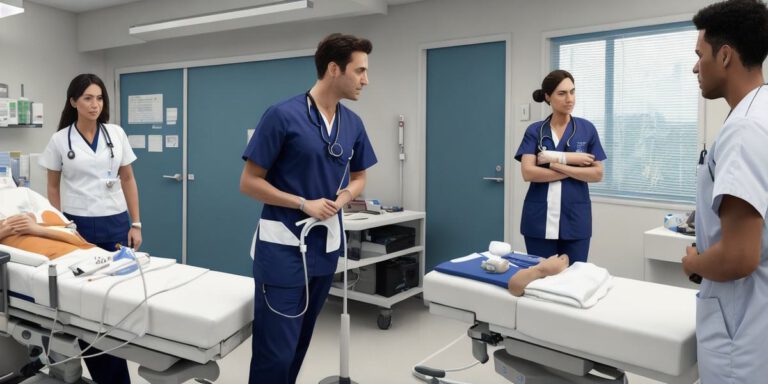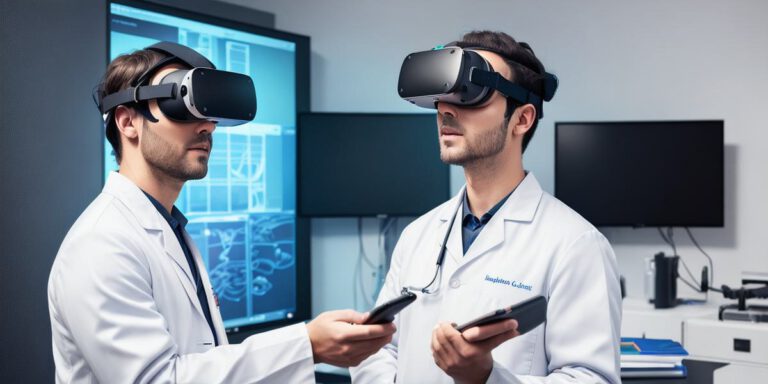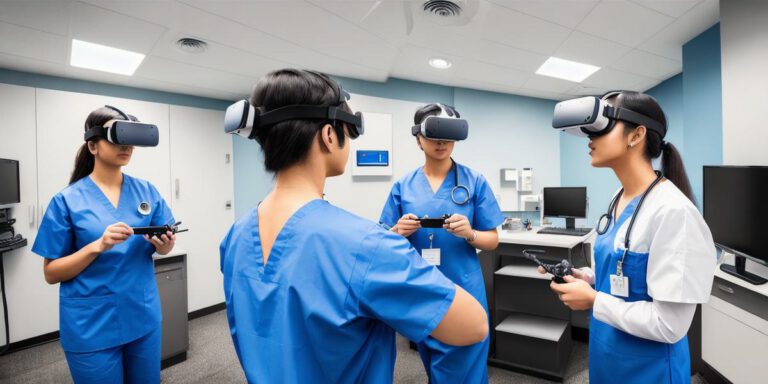Exploring the Benefits of VR for Learning Human Anatomy

Introduction:
In today’s fast-paced world, students are looking for innovative ways to learn and retain information. One technology that has been gaining popularity in recent years is virtual reality (VR). VR can provide an immersive learning experience that allows students to visualize complex concepts and interact with them in a way that traditional classroom settings cannot. In this article, we will explore the benefits of using VR for learning human anatomy.
Heading 1: Immersive Learning Experience
One of the biggest advantages of using VR for learning human anatomy is that it allows students to immerse themselves in a virtual world that replicates real-life scenarios. This can provide a more engaging and interactive experience than traditional classroom settings, where students are often limited to viewing images or diagrams on a whiteboard.
Case Study: One example of the power of VR for learning human anatomy is the "Anatomage" product, which allows medical students to virtually dissect a human body in 3D. This has been shown to improve student understanding and retention of complex concepts compared to traditional dissections.
Heading 2: Improved Visualization and Understanding
Virtual reality can provide an unparalleled opportunity for students to visualize complex concepts and interact with them in a way that is not possible in a traditional classroom setting. This can lead to a deeper understanding of the subject matter, as students are able to explore and manipulate objects in a way that helps them to grasp difficult concepts.
Case Study: Research has shown that students who use VR to learn human anatomy have better visualization skills and retention rates compared to those who use traditional classroom settings or online resources. This is because VR allows students to interact with the subject matter in a more hands-on way, which can improve their understanding and retention of complex concepts.
Heading 3: Cost-Effective
Virtual reality technology can be expensive, but it can also be cost-effective in the long run. By providing an immersive learning experience that is accessible from anywhere with an internet connection, VR can help to reduce the need for physical classroom space and materials. This can save money and resources, while still providing students with a high-quality education.
Case Study: One example of the cost-effectiveness of VR for learning human anatomy is the "Medical Realities" product, which allows medical students to access high-quality virtual simulations from anywhere in the world. This can save money on classroom space and materials, while still providing students with an immersive and engaging learning experience.
Conclusion:
Virtual reality technology has the potential to revolutionize the way that we learn and teach human anatomy. By providing an immersive and interactive experience that allows students to visualize complex concepts and interact with them in a way that is not possible in a traditional classroom setting, VR can improve student understanding and retention rates, while also saving money and resources. Whether you are a medical student or a teacher looking for new ways to engage your students, virtual reality technology is worth considering as a powerful tool for learning human anatomy.








